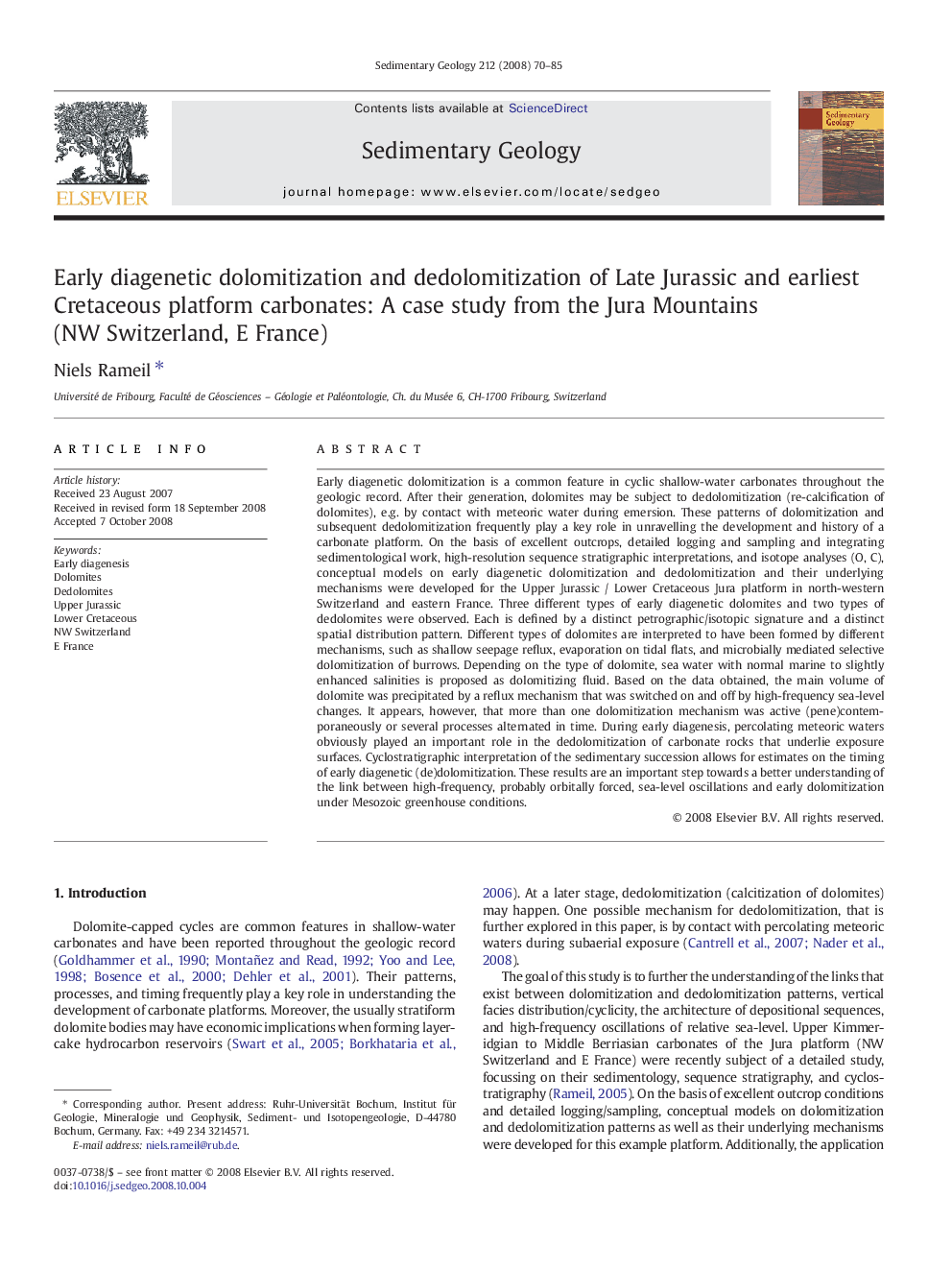| کد مقاله | کد نشریه | سال انتشار | مقاله انگلیسی | نسخه تمام متن |
|---|---|---|---|---|
| 4690423 | 1636146 | 2008 | 16 صفحه PDF | دانلود رایگان |

Early diagenetic dolomitization is a common feature in cyclic shallow-water carbonates throughout the geologic record. After their generation, dolomites may be subject to dedolomitization (re-calcification of dolomites), e.g. by contact with meteoric water during emersion. These patterns of dolomitization and subsequent dedolomitization frequently play a key role in unravelling the development and history of a carbonate platform. On the basis of excellent outcrops, detailed logging and sampling and integrating sedimentological work, high-resolution sequence stratigraphic interpretations, and isotope analyses (O, C), conceptual models on early diagenetic dolomitization and dedolomitization and their underlying mechanisms were developed for the Upper Jurassic / Lower Cretaceous Jura platform in north-western Switzerland and eastern France. Three different types of early diagenetic dolomites and two types of dedolomites were observed. Each is defined by a distinct petrographic/isotopic signature and a distinct spatial distribution pattern. Different types of dolomites are interpreted to have been formed by different mechanisms, such as shallow seepage reflux, evaporation on tidal flats, and microbially mediated selective dolomitization of burrows. Depending on the type of dolomite, sea water with normal marine to slightly enhanced salinities is proposed as dolomitizing fluid. Based on the data obtained, the main volume of dolomite was precipitated by a reflux mechanism that was switched on and off by high-frequency sea-level changes. It appears, however, that more than one dolomitization mechanism was active (pene)contemporaneously or several processes alternated in time. During early diagenesis, percolating meteoric waters obviously played an important role in the dedolomitization of carbonate rocks that underlie exposure surfaces. Cyclostratigraphic interpretation of the sedimentary succession allows for estimates on the timing of early diagenetic (de)dolomitization. These results are an important step towards a better understanding of the link between high-frequency, probably orbitally forced, sea-level oscillations and early dolomitization under Mesozoic greenhouse conditions.
Journal: Sedimentary Geology - Volume 212, Issues 1–4, 15 December 2008, Pages 70–85